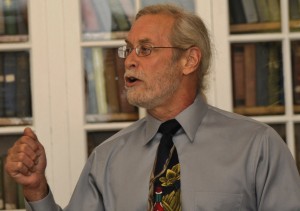Mechanisms of Creative Cognition: Theory and Research
Professor Steven M. Smith
Department of Psychology
Texas A&M University
Abstract. The cognition that gives rise to creative ideas is neither a special mechanism, nor a unitary one, but rather consists of a number of cognitive processes and structures that collaborate in various ways to yield creative products. Theory and research related to creative ideation will be discussed, with a focus on memory and conceptual mechanisms. Empirical research examining the roles of implicit and explicit memory and forgetting in fixation, incubation, and insight shows consistent effects across a number of levels of complexity and ecological realism. Similarly, conceptual processes involved in conceptual extension, combination, and analogical transfer support the validity of the theory of structured imagination in ideation research. Furthermore, research on creative cognition helps our understanding of some aspects of cognition that traditionally have been regarded as non-creative, such as the nature of false memories and the graded structure of categories. Thus, research on cognition and on creative ideation can be mutually informative.
About the speaker. Beginning in the 1980s, Dr. Smith and his colleagues defined and developed methods for examining aspects of creative cognitive processes in laboratory research. This creative cognition approach encompasses both cognitive structures, such as conceptual combinations, preinventive forms, and mental sets, and cognitive processes, such as analogical transfer, restructuring, abstraction, and remote association. His books about this topic include Creative Cognition: Theory, Research, and Applications (1992), The Creative Cognition Approach (1995), Creativity and the Mind: Discovering the Genius Within (1995), and Creative Thought: An Investigation of Conceptual Structures and Processes (1997). Dr. Smith’s forgetting fixation theory states that so-called ‘incubation effects’ can be caused by escape from fixation, when seductive but obstructing initial approaches are finally put out of mind despite implicit memory processes that are difficult to deliberately overcome. Dr. Smith’s interdisciplinary work, which bridges his research on creative cognition with creative engineering design, business, and computer science, has dealt with creative conceptual design in engineering, and with information discovery in computer science.
Beyond his creative cognition work, Dr. Smith’s experimental work on context-dependent memory has influenced memory enhancement techniques that are used forensically to enhance eyewitness memory, leading to his service as an expert on eyewitness memory in numerous legal cases. Dr. Smith has also published experimental research on blocked, recovered, and false memories.
In addition to his four books, Dr. Smith is the author of more than eighty articles in cognitive psychology, and his work has been supported by the National Science Foundation. Dr. Smith has given invited addresses on creative cognition research around the world, including England, Spain, The Netherlands, Japan, and China.

